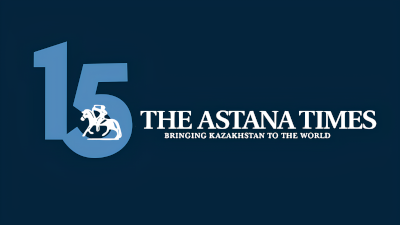Kazakhstan is recently gaining attention for its consistent attempt of expanding its direct flight connections to key global destinations. At first glance, this strategy looks like a straightforward economic and logistical improvement aimed at enhancing the country’s capacity to attract foreign tourists. In this regard, more than 1.5 million foreign tourists visited Kazakhstan in 2024, thus showing a remarkable improvement in the local tourism industry. However, a deeper analysis reveals that this approach also reflects an articulated and well-structured foreign policy strategy.

Alberto Frigerio.
At present, Kazakhstan has direct flights to 32 countries around the world. The list includes countries in the European Union (Bulgaria, Italy, Germany, Greece, Netherlands, Poland) and three countries in the European continent (Belarus, Montenegro and Russia), the United Kingdom, seven countries in the Middle East and Northern Africa (Egypt, Kuwait, Oman, Qatar, Saudi Arabia, Türkiye and United Arab Emirates), six countries in the Caucasus and Central Asia (Armenia, Azerbaijan, Georgia, Kyrgyzstan, Tajikistan and Uzbekistan), six countries in South and Southeast Asia (Cambodia, India, Malaysia, Maldives, Thailand and Vietnam), three countries in East Asia (China, Mongolia and South Korea). New flights with other destinations are planned to be launched in the upcoming years.
Kazakhstan’s central location in Eurasia has historically positioned it as a vital connection between the East and the West. The ancient Silk Road once crossed its vast steppes, facilitating trade and cultural exchanges. Today, modern air routes serve a similar purpose, connecting Astana and Dubai, Almaty and Beijing and Almaty and London. These flights are not just about convenience; they reflect Kazakhstan’s strategic aim to strengthen relationships with nations across the globe.
For instance, direct flights to Gulf countries underline Kazakhstan’s growing ties with the Middle East, both economically and diplomatically. The region’s shared interests in energy, trade, and investment have made these connections a priority. Similarly, new routes to European and Asian hubs show Kazakhstan’s role as a key partner in initiatives like China’s Belt and Road Initiative and its strategic partnerships with the European Union and long-term partners like Italy, Germany and the Netherlands.
Air connectivity also forms a crucial tool of economic diplomacy. By linking Kazakhstan directly to major markets, the government is sending a clear signal: the country is open for business. Foreign investors, entrepreneurs, and tourists are more likely to consider Kazakhstan as a destination when travel is simplified. This strategy aligns with Kazakhstan’s broader goal of diversifying its economy and reducing dependence on oil and gas revenues.
For example, the new direct flights to China, Vietnam and Egypt offer opportunities to boost trade and attract tourists. Likewise, Kazakhstan is seeking to expand its connections in Europe by targeting countries like Austria, Hungary and Latvia. In this sense, every new route represents a potential corridor for economic growth.
Kazakhstan’s growing flight network is both an operational and a political step into the future. Its multi-vector foreign policy, a cornerstone of its international relations since independence in 1991, emphasizes the need of building constructive relations with major powers while fostering regional cooperation. Direct flights serve as tangible outcomes of these balanced diplomatic efforts.
For example, the consolidation of direct routes to countries like Kyrgyzstan, Tajikistan and Uzbekistan symbolizes the deepening strengthening of ties within the Central Asian region, reflecting shared interests in areas like security, economic cooperation, and global challenges. Likewise, the launching of new flights to Asian capitals—like Beijing, Seoul, and, in the future, Tokyo—highlights Kazakhstan’s acknowledgement of Asia’s growing influence on the world stage.
The launch of new direct flights brings along various challenges. Establishing and sustaining these routes requires a strong aviation industry, discussions with foreign governments, and significant investment in infrastructure. To stay competitive, Kazakhstan must also ensure that its facilities and airlines meet international standards.
Nevertheless, these challenges also boost new opportunities. By investing in aviation, Kazakhstan is enhancing its soft power. Every traveller who experiences Kazakh hospitality on a flight or passes through its airports is a potential ambassador for the country, spreading word of its culture, heritage, and ambitions. Moreover, the development of air transportation is a key driver of infrastructural growth, as demonstrated by the opening of the new Almaty International Airport in 2024, which is set to enhance connectivity and stimulate regional development.
Kazakhstan’s expanding network of direct flights embodies a larger vision for its role in the world. It is a vision of connectivity, cooperation, and progress. By connecting its cities to the global community, Kazakhstan is not only facilitating the movement of people and goods but also fostering the exchange of ideas and opportunities. As Kazakhstan continues to build bridges through its foreign policy, its direct flights will keep serving as a powerful symbol of its ambitious goals and a reminder of its lasting significance as a crossroads of civilizations.
The author is Alberto Frigerio, an Italian professor of international relations, School of Politics and Law at Almaty Management University.


